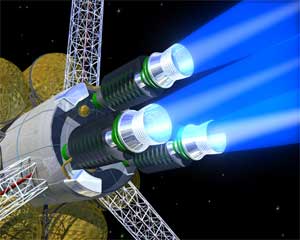G
Gravity_Ray
Guest
I don’t want to mess with Jakethesnake's VASIMR update tread, but I really want to talk about this technology.
1. I really want to see Bolden move NASA towards massive funding of this technology and also nuclear power to provide the power VASIMR needs to get to the 200-kilowatt engine, the VX-200.
2. NASA should be giving Ad Astra a contract with some money for additional testing to get this technology to level 7 ASAP.
3. I really want to see NASA make this a demonstration mission for the ISS after the Russian re-boost contract with the ISS is finished.
4. Talk about a natural fit for building a space ship in space (preferably in high Earth orbit) maybe in a LaGrange point. This is the ship that we should be building (and I want the first one to be named Enterprise). This ship is perfect for our NEO encounters and also the first trip to Mars in a decade or so.
5. Is Chang Diaz the best astronaut scientist out there or what?
Bring on the discussions.
1. I really want to see Bolden move NASA towards massive funding of this technology and also nuclear power to provide the power VASIMR needs to get to the 200-kilowatt engine, the VX-200.
2. NASA should be giving Ad Astra a contract with some money for additional testing to get this technology to level 7 ASAP.
3. I really want to see NASA make this a demonstration mission for the ISS after the Russian re-boost contract with the ISS is finished.
4. Talk about a natural fit for building a space ship in space (preferably in high Earth orbit) maybe in a LaGrange point. This is the ship that we should be building (and I want the first one to be named Enterprise). This ship is perfect for our NEO encounters and also the first trip to Mars in a decade or so.
5. Is Chang Diaz the best astronaut scientist out there or what?
Bring on the discussions.




